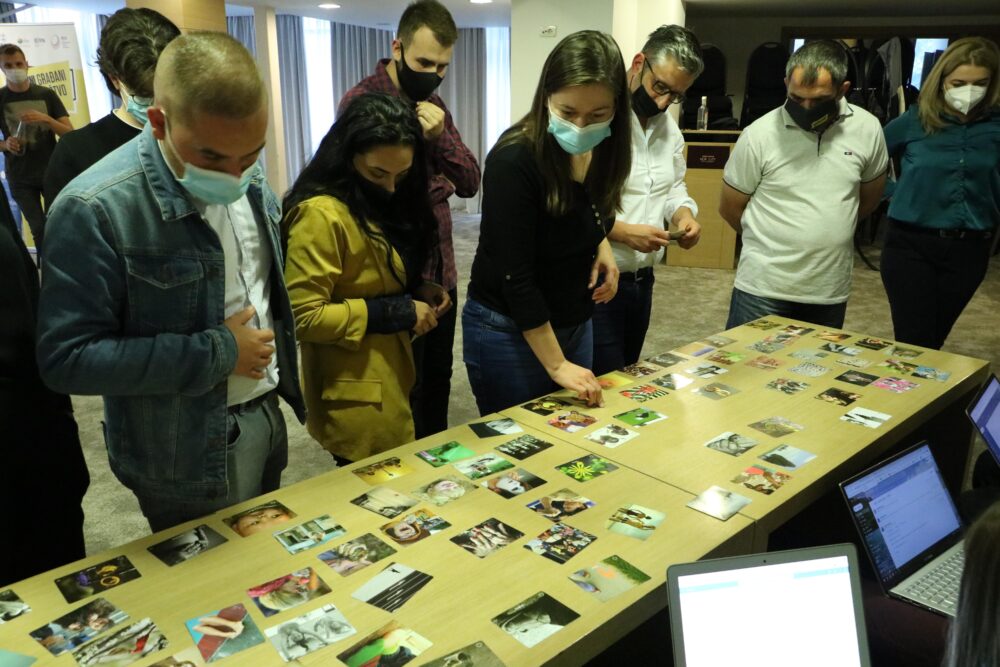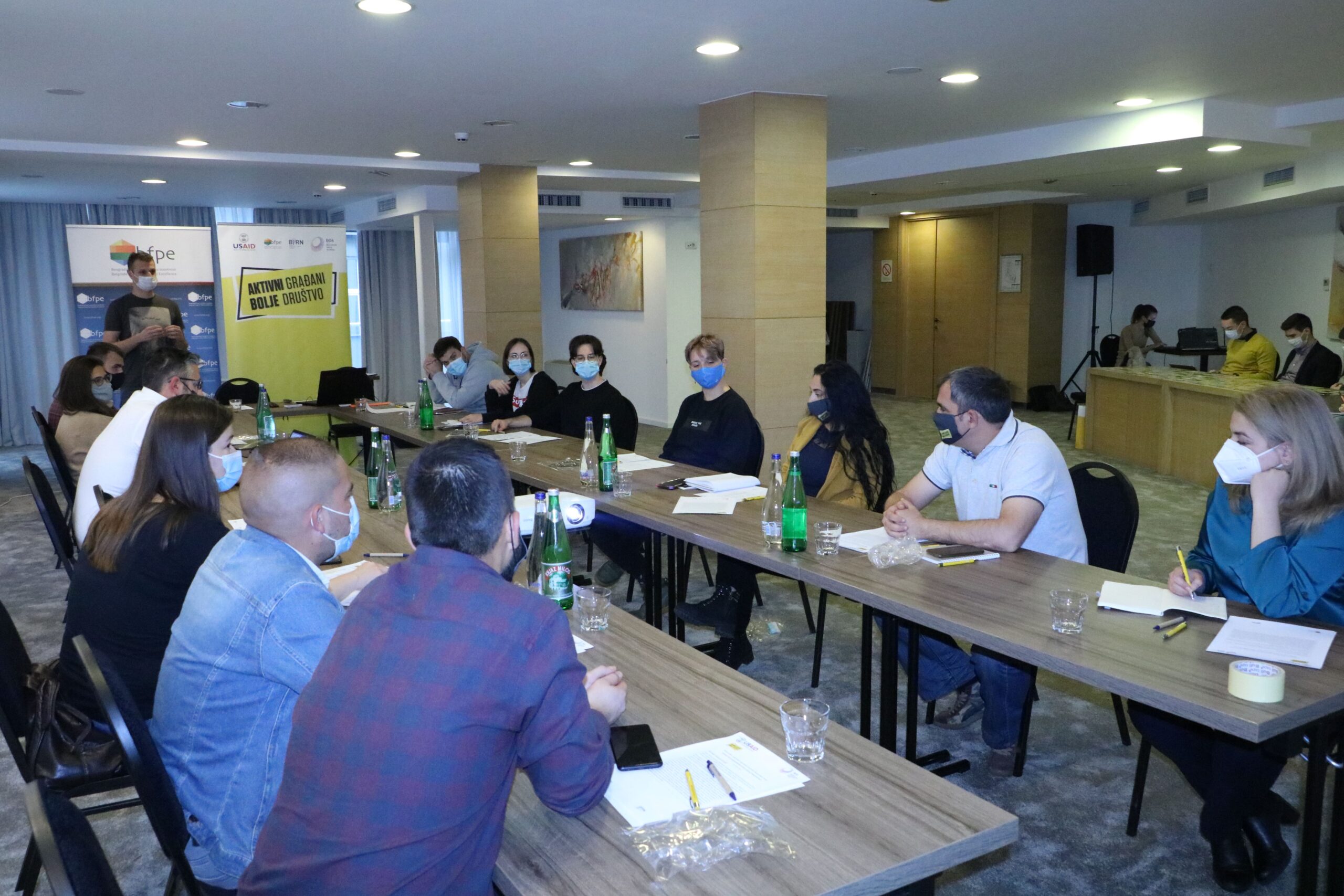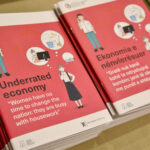From October 7-9th in Nis, we organized a Design Thinking training called “How to redesign the relationship between the civil and business sector”.
During this workshop, our partners had the opportunity to get acquainted with the concept and stages in the cycle of Design thinking, formulation of ideas, the importance of empathy, and perspective in defining problems on the example of cooperation between civil and business sectors.
Throughout the training, the importance of defining challenges in the process of innovative thinking was emphasized. Participants, who worked in groups, had a task to define specific challenges they would like to work on using a Design thinking approach and methodology. The groups generally faced a similar challenge – a lack of mutual understanding and information within the business community about the activities carried out by civil society organizations.

At the very beginning, the key tools of the first phase in Design thinking (empathy phase) were presented, such: empathic interview, observation, user experience, analogy. Participants in the groups tested how different tools work in practice and thus gathered the necessary facts and insights for the next stages in the process of Design thinking.
The next phase – the phase of defining (ideation) problems included understanding the collected insights from the empathy phase, synthesizing these findings, and defining the personality – users for whom they designed the solution and their views on the identified challenge. The participants in the groups had the task to put into practice the presented tools for thinking about the defined challenges. The groups mostly used Mitsubishi, 6-3-5, and vice versa as methods to create a series of ideas to solve their challenge. After completing this phase, some of the groups realized that they would have to take a step back and reconsider the challenge they had defined.
In the last phase of Design thinking – the phase of presenting and testing solutions, participants began to consider the impact on the feasibility of their ideas through feedback on the developed prototypes. It is presented through tools for making prototypes, such as making sketches and diagrams, storyboards, Lego prototypes, role-playing, customer travel, etc. In the group work, the participants, using storytelling, storyboard, and role play, presented their selected prototypes for the identified challenges related to the lack of cooperation between the business community and civil society organizations.













